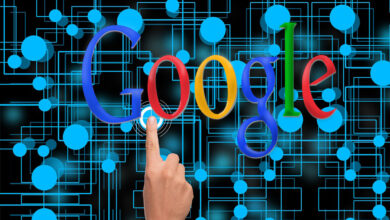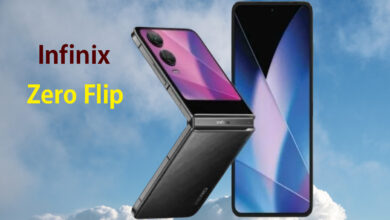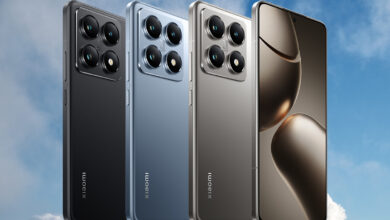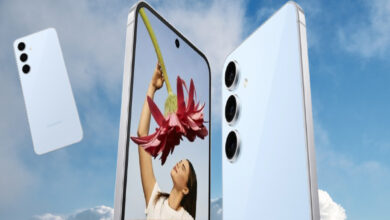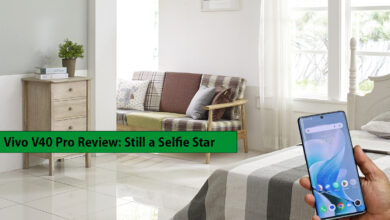iPhone 16 VS. Pixel 9 – which base level smartphone to pick?

The smartphone battle continues, and this time it’s the iPhone 16 facing off against Google’s Pixel 9. With the recent launch of the iPhone 16 and 16 Pro, Apple has made significant strides in artificial intelligence (AI). But does it stack up against the established prowess of the Pixel 9? Let’s dive into the details.
Apple vs. Google: The Performance Showdown
When it comes to smartphone performance, Apple clearly leads the pack. The latest Tensor G4 chip in Google’s Pixel 9 is a refinement of its predecessor, the G3. However, it’s still lagging behind Apple’s A18 chip found in the iPhone 16.
Gaming Performance
For gamers, this gap can be significant. Titles like Death Stranding and Genshin Impact demand high performance. Here, Apple’s silicon shines brighter. If you push your phone to its limits, the iPhone 16 is likely to outperform the Pixel 9.
Real-World Experience
That said, everyday use tells a different story. In our review, the Pixel 9 felt snappy for most tasks. If you’re not gaming or using demanding apps, you might not notice any difference between the two devices. For casual users, both phones deliver smooth experiences.
AI Capabilities
AI performance comparisons will emerge once new iPhones hit the market. While Google may excel in on-device AI tasks, Apple’s chips are built for speed across various applications.
Camera Controls
Apple also claims an advantage in camera controls. The Pixel 9 offers quick access with a double-tap of the power button for launching the camera. However, iPhone 16 users enjoy more flexibility with Camera Control features that allow zooming and adjusting settings without touching the screen.
The Action button on the iPhone provides additional shortcuts that enhance usability—something missing from Google’s offering.
Apple iPhone 16 vs. Google Pixel 9: A Clash of Camera Titans
In the world of smartphones, the camera is king. The latest offerings from Apple and Google showcase impressive advancements in photography. Let’s dive into what makes the iPhone 16 and Pixel 9 stand out.
Apple iPhone 16: Capturing Moments with Precision
The iPhone 16 retains its powerful 48MP main camera, now featuring a faster aperture. This upgrade means better low-light performance, allowing you to capture stunning images even in dim environments. Whether it’s a candlelit dinner or a night out, your photos will shine.
New Features to Explore
Apple introduces the Camera Control Button, providing quick access to launch and control the camera. This feature enhances usability, making it easier than ever to snap that perfect shot.
Another exciting addition is Visual Intelligence. Similar to Google Lens, this tool analyzes objects in real time. Want to add event details from a poster directly into your calendar? Just snap a photo! Visual Intelligence makes interactions seamless and intuitive.
The iPhone 16 also brings macrophotography from its Pro models and improved noise reduction for videos. These enhancements elevate your overall photography experience, ensuring every detail is captured beautifully.
iPhone 16 vs. Pixel 9: A Battle of Battery Life and Features
The smartphone market is buzzing with excitement over the latest releases from Apple and Google. The iPhone 16 and Pixel 9 each bring unique features, especially in battery life and usability. Let’s dive into what makes these devices stand out.
Enhanced Battery Life in iPhone 16
Apple has made strides in battery efficiency with the new A18 chip. While exact figures remain under wraps, users can expect improved longevity. The iPhone 16 supports faster 25W MagSafe wireless charging and adopts the new Qi2 standard. This means more convenience for those always on the go.
However, there’s a catch: the base storage option is still 128GB. For avid photographers or video enthusiasts, this could be limiting. High-resolution content takes up space quickly, so consider your storage needs before purchasing.
Pixel 9: Power Meets Efficiency
On the other hand, Google’s Pixel 9 boasts a 4650mAh battery—slightly smaller than its Pro version but still impressive. Google claims it can last over 24 hours, or even up to 100 hours in Extreme Battery Saver mode. It also supports 45W fast charging, allowing you to reach 50% charge in just 30 minutes. However, it lacks Qi2 support for wireless charging, resulting in slower speeds compared to its competitors.
Customizable Action Button on iPhone 16
One standout feature of the iPhone 16 is its customizable Action Button. Similar to the iPhone 15 Pro, this button lets users set specific functions for quick access—like launching the camera or activating Siri Shortcuts. This small addition enhances user experience significantly.
Moreover, Apple introduces a Camera Control Button and integrates Visual Intelligence for photography enthusiasts. Users can engage directly with objects through their camera lens, making capturing moments easier than ever.
AI Innovations in Pixel 9
Google continues to push boundaries with AI-driven features in the Pixel 9. The introduction of Gemini AI powers not only its voice assistant but also various exclusive tools that enhance daily tasks.
With features like Gemini Live, interactions feel more natural and intuitive. The new weather app and Magic Lists for Google Keep further emphasize Google’s commitment to making everyday tasks smarter and more efficient.
Conclusion: Which One Is Right for You?
Both the iPhone 16 and Pixel 9 offer impressive advancements in battery life and user experience. If you prioritize fast charging and an efficient operating system, you might lean towards the Pixel 9. However, if customizable features and enhanced photography capabilities are your focus, the iPhone 16 could be your best bet.
Ultimately, your choice will depend on what matters most to you as a user—be it storage capacity, battery longevity, or innovative features!
Google Pixel 9: The Power of AI at Your Fingertips
On the other side, we have the Google Pixel 9. It continues to impress with its photography capabilities by bringing back the 50MP main sensor from its predecessor while adding a new 48MP ultrawide lens with macro focus. This setup allows for breathtaking landscapes and intricate close-ups alike.
Innovative AI Features
Google leverages its generative AI tools extensively in this model. One standout feature is Magic Editor, which lets users reframe photos or change backgrounds using simple text prompts. Want to swap out that busy background? Just type it!
Additionally, the Pixel 9 includes a Video Boost feature that enhances low-light video capture, making those nighttime recordings clearer than ever. Plus, with the Add Me feature, you can insert yourself into group photos after they’ve been taken—perfect for those moments when someone gets left out!
Making Your Choice
Both phones offer exceptional camera systems packed with innovative features driven by AI technology.
- If you value immediate interactivity and seamless integration with your device’s functionality, Apple’s iPhone 16 might be your best bet.
- However, if post-shot editing flexibility excites you, Google’s Pixel 9 offers unique tools that can transform your images creatively.
Ultimately, your choice depends on what you prioritize in smartphone photography—immediacy or creativity? Either way, both devices promise stunning results that will elevate your photography game!
iPhone 16 vs. Google Pixel 9: A Clash of Titans
The tech world is buzzing with excitement over the latest releases from Apple and Google. The iPhone 16 and Google Pixel 9 have arrived, each boasting impressive features that cater to different user preferences. Let’s dive into what makes these devices stand out.
Familiar Yet Enhanced: The iPhone 16
Apple sticks to a winning formula with the iPhone 16. It retains the beloved 6.1-inch display size from last year’s model, but there are significant upgrades under the hood.
Tougher Glass
One of the standout features is the front glass, which is now 50% stronger than the original Ceramic Shield. This means your phone can withstand more drops and scratches, giving you peace of mind in everyday use.
Brightness That Dazzles
The display shines at an impressive 2000 nits peak brightness, making it easy to see even in bright sunlight. Plus, it can dim down to just 1 nit, perfect for low-light conditions.
Exclusive Features for Pro Models
While the standard models are impressive, keep in mind that features like ultra-slim bezels and a 120Hz ProMotion display are reserved for the Pro versions.
A Splash of Color
Apple introduces new colors this year: ultra marine, teal, pink, white, and black. These options add a fresh twist to its lineup, appealing to those who love personalization.
The Pixel Powerhouse: Google Pixel 9
On the other side of the ring is the Google Pixel 9. With a slightly larger 6.3-inch Actua OLED display, it offers some compelling advantages.
Superior Brightness
The Pixel 9 boasts a peak brightness of 2700 nits, making it brighter than the iPhone 16 in direct sunlight. This feature is crucial for outdoor enthusiasts or anyone who spends time in bright environments.
Smooth Scrolling Experience
With support for a variable refresh rate between 60-120Hz, scrolling feels incredibly smooth on this device. This not only enhances user experience but also improves battery efficiency—an essential factor for heavy users.
Strong Protection
Like its Apple counterpart, the Pixel 9 is protected by Gorilla Glass Victus 2. This tough glass ensures excellent scratch resistance and durability against drops.
Conclusion: Choosing Your Champion
Both devices offer unique strengths tailored to different lifestyles:
- If you value durability and design aesthetics with vibrant color options, the iPhone 16 may be your best bet.
- However, if you prefer superior brightness and smooth performance for media consumption or gaming, consider going with the Google Pixel 9.
Ultimately, your choice will depend on what features matter most to you as both phones continue to push boundaries in smartphone technology!
The Battle of the Titans: iPhone 16 vs. Google Pixel 9
The smartphone arena is buzzing with excitement as Apple and Google unveil their latest flagships: the iPhone 16 and Google Pixel 9. Each device showcases cutting-edge technology, but which one reigns supreme? Let’s dive into the specs and features that set these two apart.
Power Under the Hood
iPhone 16
At the heart of the iPhone 16 lies Apple’s latest A18 chipset. This powerhouse boasts a 6-core CPU that delivers a staggering 30% increase in speed compared to its predecessor. But it doesn’t stop there. The A18 chip also includes a 16-core Neural Engine, finely tuned for AI tasks. This makes it perfect for the innovative Apple Intelligence features found in iOS 18.
Built on second-generation 3nm technology, the A18 not only enhances performance but also improves power efficiency. Users can expect longer battery life without sacrificing speed or multitasking capabilities.
Google Pixel 9
On the flip side, we have the Google Pixel 9, powered by the Tensor G4 processor. While it may not boast raw power like Apple’s A18, it shines in real-world applications that leverage AI enhancements. Google claims a 20% boost in web browsing speeds and a 17% improvement in app launch times over its predecessor, the Pixel 8.
The Tensor G4 is designed specifically for AI-driven tasks, making it an excellent choice for users who prioritize smart features over sheer performance.
Efficiency Meets Multitasking
Both devices are engineered for efficiency and seamless multitasking. The iPhone 16’s A18 chip provides an edge in raw performance, making it ideal for heavy-duty tasks like gaming and video editing. However, if your focus is on everyday usability with intelligent features, the Pixel 9 offers impressive enhancements tailored to enhance user experience.
The Importance of Apple Intelligence: Bridging Gaps in AI Technology
When we talk about Apple Intelligence, calling it important feels like an understatement. This technology is not just a trend; it’s a crucial step for Apple to catch up in the AI race. With advancements in Siri and Visual Intelligence on the iPhone 16, Apple is addressing long-standing gaps that have hindered its competitiveness.
Siri vs. Google Assistant: A Long-Standing Rivalry
Siri has struggled to keep pace with Google Assistant and now Gemini. While both platforms offer voice recognition and smart responses, Siri has often lagged behind in functionality. Apple’s commitment to enhancing Siri through AI integration aims to level the playing field. Users can expect more accurate responses and improved user experience.
Visual Intelligence: Competing with Google Lens
The introduction of Visual Intelligence on the iPhone 16 range is a game changer. This feature directly competes with Google Lens, which excels at identifying objects and providing contextual information. With Visual Intelligence, users can simply point their camera at something and receive instant insights—making everyday tasks easier and more intuitive.
Privacy Matters: Apple’s Edge
One area where Apple shines is privacy. With features like Private Cloud Compute, users can feel secure knowing their data remains protected. In contrast, many Android devices do not prioritize user privacy as strongly. For those concerned about data leaks, this could be a deciding factor when choosing between platforms.
Third-Party Integration: A Growing Ecosystem
Apple has also begun offering access to third-party AI models like ChatGPT. This opens up new possibilities for users who want enhanced functionality without relying solely on Apple’s ecosystem. Meanwhile, Google’s Pixel 9 may restrict access to its own AI capabilities unless you turn to external apps—a limitation that could deter some users.
Similar Features: A Competitive Landscape
Both the iPhone 16 and Pixel 9 boast impressive features such as image generation and screen-aware responses. Users can edit photos seamlessly by removing unwanted objects—either through Clean Up on the iPhone or Magic Eraser on the Pixel. Additionally, both devices offer creative tools for combining emojis and generating writing assistance.
Google Pixel 9 vs. iPhone 16: The Future of Smartphone Innovation
In the ever-evolving world of smartphones, the competition between Google and Apple is fierce. With the release of the Pixel 9, Google is stepping up its game in ways that could change how we interact with our devices.
Group Shots Made Easy
One standout feature of the Pixel 9 is “Ask Me.” This innovative tool allows you to include yourself in group photos seamlessly. Imagine being able to insert yourself into a memorable moment without awkwardly asking someone to take another shot. While some may view this as a gimmick, it adds a fun twist to photography that iPhone users simply don’t have.
Reality-Bending Capabilities
The Pixel 9 takes creativity further by allowing users to manipulate their surroundings. Want to swap out backgrounds or add objects? You can do that! While Apple has valid concerns about photo ethics and manipulation, these features offer exciting possibilities for those who want to explore their artistic side.
Conversational AI: A Game Changer
Then there’s Gemini Live, Google’s advanced conversational AI. Unlike Siri, which excels at handling straightforward requests, Gemini allows for dynamic conversations. You can interrupt it mid-sentence or dive deep into discussions without losing context. Sure, it requires a subscription and isn’t perfect—like many AI systems, it can make mistakes—but its capabilities are impressive.
Timing Is Everything
Another critical factor is availability. The Pixel 9 comes with Gemini built-in from day one. In contrast, iPhone 16 users will have to wait until October for Apple Intelligence features—and even then, some upgrades might not be ready until 2025. When you buy an iPhone now, you’re investing in potential rather than immediate benefits.
Software: The Gap is Smaller Than Ever
Let’s be frank: the differences between Android and iOS are becoming less pronounced. Both platforms have evolved, making it harder to choose a clear winner. Here’s a breakdown of what you need to know.
Flexibility vs. Simplicity
Android is known for its flexibility. You can install third-party apps easily, especially within the EU. Customization is another strong point; third-party launchers allow you to change your entire user experience.
On the other hand, iOS has stepped up its game. With iOS 18, Apple has introduced features that make it more versatile. You can now place app icons anywhere on your home screen and customize them to match your aesthetic—something that was once exclusive to Android.
New Features in iOS 18
The latest update brings exciting changes:
- Customizable Control Center: Now more expansive and tailored to your needs.
- Hidden and Locked Apps: A feature reminiscent of certain Android variants.
If you’ve shied away from iPhones due to their past restrictions, it might be time for a second look.
The Ongoing Debate
Despite these improvements, the iPhone 16 may not sway die-hard Android fans. Here’s why:
- Limited Customization: While iOS offers some new features, it still lacks the extensive customization options that Android users cherish.
- App Defaults: Changing default apps remains limited on iOS. For instance, you can’t use a web browser with a different engine than Safari.
If having control over every aspect of your phone is essential, the Pixel 9 remains the better choice.
iPhone 16 vs. Pixel 9: A Buyer’s Perspective
If you’re in the market for a new phone, the choice between the iPhone 16 and Pixel 9 might seem daunting. But let’s simplify it: both devices are excellent options. They boast impressive builds, powerful performance, and cameras that rarely disappoint.
Performance and Longevity
The iPhone 16 is known for its raw power. It tends to hold up better over time, making it a solid investment if longevity is your priority. However, don’t underestimate the Pixel 9; it performs admirably today and won’t leave you feeling slow.
The AI Advantage
When it comes to artificial intelligence, Google currently takes the lead. The Pixel 9 benefits from Google’s head start in generative AI technology. If cutting-edge AI features are essential to you right now, the Pixel may be your best bet.
Apple is gradually catching up but still has some ground to cover. While Apple’s ecosystem offers great integration, it may not yet match Google’s flexibility in software capabilities.
Future Prospects
Looking ahead, Apple is working on enhancing its AI features through what they call “Apple Intelligence.” By the time this development rolls out, many of its current weaknesses could be addressed. This means that as a shopper, you won’t have to sacrifice too much by choosing Apple over Google.
Making Your Choice
Ultimately, your decision should hinge on personal preference rather than technical specifications alone. Consider what platform you enjoy more—iOS or Android—and whether there are any must-have features that sway your choice.

